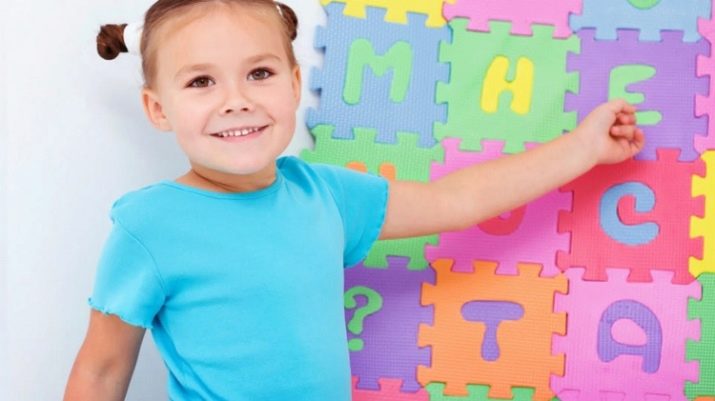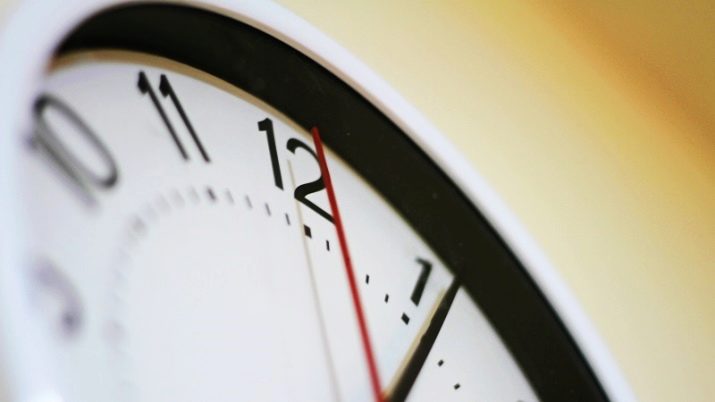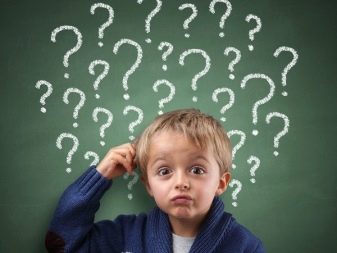Arbitrary attention: what is it and how to develop it?

An attentive person always has great advantages. He is able to see and remember those facts that other people may simply not notice. That's why it is necessary to develop attention. It is advisable to do this from childhood. Then the child will grow up not indifferent to the world around him and will have a very good intellect.

What it is?
If we talk about attention in general, then this process is called selective focus on any object. This interest is usually quite high. That is why different details of this or that event are deposited in our mind. There is voluntary and involuntary attention. Involuntary attention has a biological origin, and voluntary attention is the result of some human activity.
In psychology, voluntary attention is considered special, since the individual shows willpower in its implementation in order to turn his gaze to a certain fact or information. In children, the cognitive process is first built on vivid pictures or life moments. This is how involuntary attention works. But voluntary attention needs to be developed in a child, since it is not given from birth. And the earlier the development of this type of brain activity begins, the faster the child's intellect will develop.
You need to know that voluntary attention is shown only when we set ourselves a task... For example, remember this or that material. A person learns to control voluntary attention from childhood. And when such a process becomes a habit, the individual can easily concentrate on the goal and solve the problem.That is why, often, diligent students achieve great success. They first force themselves to constantly focus on this or that information, and then such a process becomes normal. And this once again proves that voluntary attention is due to the setting of a particular goal.
Remember that voluntary attention characterizes the volitional qualities of a person, determines his activities and the range of his interests. Its function is to regulate the course of mental processes.

That is why, thanks to the work of voluntary attention, a person can easily find the necessary information in his memory and reproduce it. In this process, the cerebral cortex of the human brain is involved. They are just responsible for adjusting the activity, as well as for programming this activity.
Feature of voluntary attention consists in the presence of a certain stimulus that comes from the second signaling system. Thus, a person can give "orders" to himself. That is precisely why voluntary attention is considered the highest mental function, which is inherent only in humans. When this attention is working, a conscious application of volitional efforts occurs, which cannot disappear only because a person at this moment may have a distracting option.
Let's summarize and consider the distinctive features of voluntary attention:
- arbitrariness;
- awareness and mediation;
- it does not arise at birth, but is formed;
- this function arose in the course of evolution, which affected the development of human society;
- it is also dependent on direct involvement in the learning process and memorization of this or that information;
- this type of brain activity goes through certain phases of development in ontogenesis.

At what age does it begin to take shape?
Arbitrary attention begins to manifest itself already when we point to a toy and let the baby touch it.... This process can be called the simplest form. Over the course of 3 years, this process has been improving, and by the age of 4-5 years, the child is able to follow some complex instructions that an adult gives him. By the age of 6, preschoolers develop directed attention. Often it is based on "instructions" to oneself.
In the cognitive sphere, involuntary attention also plays an important role. The attention of young children, as we already know, is directed to bright moments and sounds. In this case, special volitional efforts are not required. However, such activity is not sufficient for the child to be able to properly develop intellectually and learn about the world around him. For example, a child can easily play with toys, run and jump. Such actions develop well the motor sphere of his activity. However, they will not be able to help him enter a social society and become its full-fledged member. But such actions as washing hands, the child will be able to master only when adults help him to do it. As a result, he will gradually begin to merge into social life.
It is voluntary attention that helps preschoolers develop certain skills and habits that are not always interesting to them.... Such brain activity does not develop in an instant. For children of primary and school age, this process can take quite a long time. The older the child becomes, the more factors arise that affect the development of voluntary attention.
For example, a student needs to master the numbers and the alphabet, learn to count and write, that is, to seriously engage in the cognitive sphere. And for this you need to make sure that voluntary attention becomes normal.

It can be said that a child has developed voluntary attention when:
- he easily perceives verbal instructions;
- he uses an algorithm that adults showed him, and this process will be fixed for quite a long time;
- can take control of his actions, or at least try to do so.
Remember: speech plays an important role in the development of attention. That is why the child must master good speech as early as possible.
Let's summarize: the abilities that allow the child to concentrate their attention on something develop gradually. Therefore, over time, children begin to be less distracted by minor things.
Based on these facts and various studies, it can be noted that at the age of 3 years, a child can be distracted from directed activity about 4 times (if this activity continues for 10 minutes). And already at the age of 6, the same child is distracted only once during a 10-minute lesson.
Tip: if you are working with preschool children in order to develop voluntary attention, you need to take into account the above information and choose such exercises that will be short and alternating.
Also note that by the age of 6, children develop voluntary and post-voluntary attention. At this age, children are able, by an effort of will, to direct their attention to the necessary information and even hold it for 40-45 minutes.

Views
Human attention is multifaceted. Let's consider this issue in more detail. Exists involuntary attention (it is caused by unexpected factors), and also there is voluntary attention (occurs if a person makes an effort of will) and post-spontaneous attention (arises after voluntary and includes features of involuntary and voluntary attention).
Let us also consider what properties the attention of a person as a whole has:
- sustainability, thereby maintaining interest in any activity or information;
- selectivity, whereby a person can specifically focus his attention on the object and information, if these two factors aroused his interest;
- volume - a person can focus on 6-7 objects at once;
- Distributiveness - it provides simultaneous interest in several objects at once while performing actions with them;
- switchability, which allows you to switch a person's attention from one place to another.
Arbitrary attention is considered the most demanded, when it comes to the development of intelligence. That is why it has some views:
- expectant - manifests itself when a person has to solve problems and make some efforts for this;
- strong-willed - it is activated when an internal dispute arises between the command "need" and "do not want to";
- Conscious - low cost and easy to produce;
- spontaneous - it stands next to post-spontaneous attention, the main thing here is to start and start the process, and then you will not need to make any efforts.

How to develop?
Children's minds are quite receptive to learning. Be aware that voluntary attention will not develop in a child by itself. Therefore, parents need to develop this particular type of intellectual activity. Consider examples of games and exercises that focus on such activities.
- Watch others game. It is advisable to play the game in a large children's team. The presenter invites the children to move one after another. And before that, he explains to the participants in advance: if the command "stop" follows, then everyone should stop and stomp their feet. Then you need to turn in the opposite direction 180 degrees and continue driving. The participant who made a mistake is eliminated from the game.
- Game "Kite"... One of the guys sits down on a chair. The presenter pronounces the word "night". At this time, the child, who plays the role of a kite, closes his eyes and waits. Other children, on the other hand, jump or run. As soon as the command “day” sounds, then all participants must freeze. The participant who does not hear the command "night" and continues to perform involuntary actions loses.He becomes a vulture and the game continues again.
- You can also suggest game "Catch the Moment". The presenter shows the children various movements. Participants must repeat them only if an adult says the command “repeat”. If there was no command, the children remain motionless. The child who was inattentive and repeated the movement without a command is eliminated from the game.
- An interesting exercise called "We print the word"... To complete it, the participants in the game are given large letters cut out of hard paper. The leader of the game writes a word on the board (it is desirable that the words are familiar, such as "desk", "pen", "spoon", "table"). Children who have the letters in the word written on the board clap their hands. As soon as the word “gathers”, everyone shouts “Hurray”.
- A game called "Vigilant Neighbors" also contributes to the formation of attention. To play the game, children line up in a circle. The driver becomes in the middle. He walks in a circle and "lulls" the attention of the players. Then the driver suddenly has to stop near one of the participants and say: "Hands up". The participant pointed to by the driver remains stationary, and the neighboring players standing next to them must raise their hands up. If someone is inattentive, they are eliminated from the game.
Please note that a child's age can limit their ability. For example, some parents consider their child to be inattentive.


They draw such conclusions without thinking. In fact, they make very high demands on their child, setting tasks exorbitant for his age. To avoid making mistakes it is necessary to carefully approach the choice of the child's activity and take into account his age capabilities.
The above were the games that can be offered to preschoolers, and now consider some exercises for schoolchildren.
- The ability to focus attention is developed by exercise. Turn the word over. To conduct it, students are offered words in which the letters are inverted. For example, these are: snave - spring; tapar - desk; lakosh - school. Children must identify the word and spell it correctly.
- The exercise "Find the mistakes" allows children to develop literacy and attention. The teacher writes a sentence on the blackboard and deliberately makes mistakes. For example, "Misha go for a walk with the sabaka and don't notice how lost he is." The teacher asks the students to identify mistakes and write down the sentence correctly. The whole class is involved in this action.
- The exercise "Find another word" develops not only attention, but intelligence. To complete it, the teacher writes words on the blackboard in which one more word is hidden. For example, "prick" (stake), "laugh" (fur), "suddenly" (friend). Children identify hidden words and write them in a column in notebooks.
- Exercise titled "Find related words" will help develop voluntary attention. To do it, write the initial word on the board, for example, "spoon". To this word it is necessary to pick up as many words of the same root as possible: "spoon - spoon, put, bed, position." The winner is the one who writes the largest number of words of the same root.
- The exercise "Find an extra word"... The teacher writes words on the blackboard that are similar in essence. For example, "cat", "horse", "cow" - they refer to pets. The word "pike" must also be added to this list. The pike is a fish. Students must find the "wrong" word.










